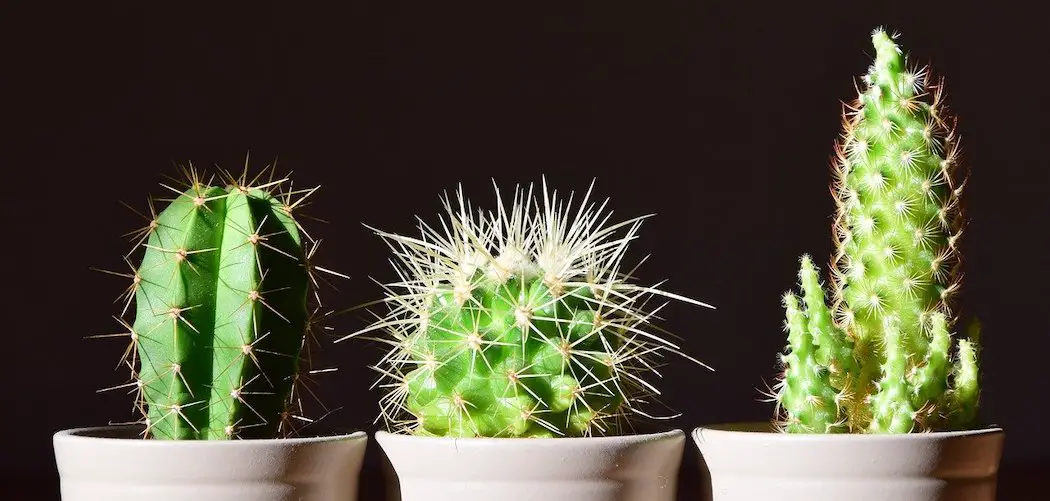While plants in the wild are always busy bumbling and sharing information with one another, ever wonder if your houseplants do the same?
Here’s a crazy fact for you: I scientist told a Venus Flytrap to close via electrical impulses, and it worked!
In this article, I will tell you if your houseplants secretly talk to each other (or to you!) and exactly how they are doing it.
Here’s If Houseplants Really Talk To Each Other:
Yes, houseplants are constantly talking to one another through the roots, but also through the air. They are communicating and listening to their neighbors, waiting for signals that let them know about changing conditions, such as a need for water, lack of sunlight or predators.
Can Houseplants From Different Species Communicate With Each Other?
Even plants and houseplants from different species can talk to one another, sharing resources and keeping each other in the know about their conditions. All of this is made possible via signalling pathways that have evolved over time, most of them coming from the roots.
Though plants seem chill, there’s always a lot going on under the soil. Lots of chemicals and microorganisms are living harmoniously, mingling with the roots.
Even though roots play an important part, plants also communicate via chemical signals in the air.
Thus potted plants from different species can talk to each other about their environment without having to be in the same pot, or even close to each other.
In the house, sending signals to other plants when they’re missing something or that they are under attack are much less important than in the wild, but they still happen.
If you were to have companion plants, sharing the same pot, they would communicate via their roots regardless of their species.
Soil is particularly important, hosting a variety of microorganisms that help to keep the plants nourished and growing.
What Types Of Houseplants Talk To Each Other?
All types of plants or houseplants seem to have a universally understood language, able to pick up on signals and understand them no matter what the plant type. Recent studies confirm that plants don’t even have to be in the same soil, sending airborne signals to other plants nearby.
No matter if you have regular houseplants, flowers, herbs, or veggies, all of them are in constant communication, even if they’re not in the same soil.
It’s possible that you have some complex waves making their way around your home, unable to hear or sense them.
Plants have evolved to send chemical signals that are universally understood.
To give you an example, the smell of freshly cut grass is a chemical response the grass produces when being cut.
There are studies showing nearby plants being able to pick up and react to the freshly cut grass, effectively understanding that danger is coming.
Do Your Houseplants Become Friends?
Your houseplants aren’t friends, at least not in the same sense humans or animals are friends. They have a relationship purely based on survival and send signals to each other when required, but they don’t form close emotional relationships.
When the balance is disrupted due to stresses like predation or lack of water, they start to reach out to other plants in an attempt to get a hold of what they need.
So, they are more distant and only come around when something is needed.
Plants form a complex network under the soil and use the help of signals to listen and speak to one another. They are always keeping tabs and making sure that everything is running smoothly.
In some cases, this triggers a chain of responses, with plants letting all those that are connected and close know that something is going on.
This helps other plants prepare by secreting chemicals to protect themselves.
These mutualistic relationships developed long ago, as there was a need in the wild. But these relationships are purely for survival, keeping everyone around in their best health.
Houseplants might not come into contact with many of these dangerous organisms, but they do experience changes in conditions.
From hot to cold and humid to dry, they will still have to adapt, even if they are in the home.
Can Houseplants Talk To Humans?
Although houseplants can’t talk to humans the same way they communicate with other plants, they do seem to respond positively when being talked to. Humans can also perceive some of the signals plants send, like the smell of freshly cut grass.
That being said, we can’t talk to our plants the same way you would do with another person or even an animal.
Because of the increased interest in plants and their ability to communicate with one another, there have been studies involving plants and their owners.
In one such study, they went as far as reading to them, testing for both a male and female voice to see what the response was. The results were very interesting, showing that plants grew more when they were being read to.
On top of that, they responded more positively to female voices, growing a few inches more.
In a recent experiment, a scientist made a Venus Flytrap close by communicating with it via electrical signals sent from a smartphone.
While you might not be able to have a full-blown conversation, you can influence their growth by talking to them a bit each day. Even though it might not seem like it, they are listening, and they are responding in their own way.
Because of that, some plant owners have addressed their concerns of leaving their plants at home all alone, thinking that they get a bit lonely.
The truth is, they don’t, and if you want to know more about why plants don’t get lonely, you can check out my in-depth article about it.
However, as long as they have some form of human reaction, they tend to respond positively.
Can Houseplants Talk To Animals?
Yes, plants constantly communicate with animals. They talk to animals using chemical or visual signals, often letting insects and small birds know they are ready for pollination.
Plants and animals (especially certain insects and bees) go way back. They rely on each other in the wild, each with their own unique way of interacting and speaking with those around them.
The same goes for your houseplants.
Some of these interactions can be very complex.
For example, plants can trick certain insects into biting them, then release chemicals that will keep them from coming back.
Some plants like the Venus Flytrap can trick flies into landing on them and then eating the flies.
Or, when it’s time to be pollinated, they can let bees know that they’re ready via different scents and colorful flowers.
All of these complex interactions have been perfected throughout the years, evolving strongly as each species relies on one another for survival.
Biological studies of communications between plants and animals are a growing area of research, especially when it comes to survival and adaptation to wild conditions.
References
Scientist controls Venus flytrap – https://www.reuters.com/technology/singapore-researchers-control-venus-flytraps-using-smartphones/


